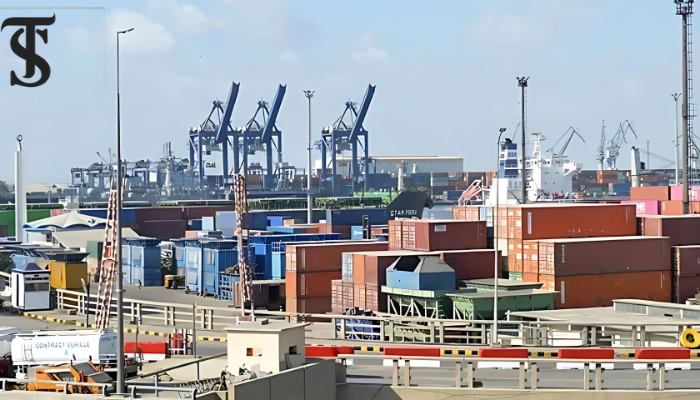IMF bailouts: Roads to Stability or Recipes for Disaster?

Once a poor village farmer was saddened by his crops withering under the relentless sun and his children lacking basic educational facilities. He had no hope to revive his crops through irrigation or to provide his children with education. Amidst this harsh situation, the IMF, considered the lender of last resort, provided his country with a bailout package to revamp its economy. The country successfully managed the bailout package, providing funds to farmers for their cultivated lands. With his government’s support, the poor farmer was able to grow his crops, and his children started attending school. This is not only the story of this man but of many people living in economically fragile countries. This story highlights the importance of IMF bailouts in stabilizing poor economies if utilized effectively. Therefore, while often criticized for its harsh austerity measures, IMF bailouts can offer a path to stability for countries facing severe economic crises. They can establish macroeconomic stability in a crisis-ridden economy, easing balance of payments crises. Furthermore, they can improve governance and equip a country to compete in a global marketplace. On the contrary, if IMF bailouts are not utilized effectively, they can become a recipe for disaster. The recipient country may get stuck in a cycle of long-term dependency on the IMF, which could threaten its national sovereignty. Additionally, they may perpetuate corruption and financial instability if not managed efficiently. However, all these negative tendencies of IMF bailouts can be minimized through prudent policy measures. First, the recipient country should focus on sustainable growth strategies rather than relying solely on short-term macroeconomic gains. Second, political stability and good governance should be prioritized for the smooth functioning of economic policies. Lastly, there should be no mismatch between the IMF loan conditions and the structural adjustment programs.
Before discussing how IMF bailouts provide a path to stability for a country, it is essential to understand what the IMF and its bailout programs entail. The IMF is an international organization that provides loans, technical assistance, and policy advice to its member countries. Established in 1944, it aims to promote international monetary cooperation and exchange rate stability. Currently, with 190 member countries and headquartered in Washington, D.C., the IMF primarily offers financial and technical assistance to countries facing economic challenges such as balance of payments crises, currency fluctuations, and high debt levels. The IMF bailout programs provide financial support to countries facing serious bankruptcy threats. This support is often accompanied by terms and conditions that the borrowing country must meet to qualify for the loan package.
To begin with, IMF bailouts establish macroeconomic stability in a country. Macroeconomic stability refers to a state where the economy experiences steady growth, low inflation, and sustainable public finances. IMF bailouts boost investor confidence in a crisis-ridden economy. As a result, investors invest in the country, enhancing its foreign direct investment (FDI) and reducing its fiscal deficit. For instance, Greece was on the brink of default during the 2009 economic crisis with rising inflation, a budget deficit, and unemployment. The IMF provided a bailout package of €240 billion, accompanied by structural reforms. Over time, Greece stabilized its economy, returning to a positive growth rate and reducing its fiscal deficit. This evidence demonstrates that IMF bailouts help countries stabilize their economies by establishing macroeconomic stability.
Besides establishing macroeconomic stability, IMF bailouts address balance of payments crises. A balance of payments crisis occurs when a country cannot pay for essential imports or service its external debt. IMF bailouts provide foreign exchange reserves to stabilize a country’s currency, which in turn can reduce balance of payments pressures. For example, Pakistan has faced multiple balance of payments issues and was close to default in 2019. The IMF approved a $6 billion bailout package for Pakistan, helping the country out of its balance of payments crisis and boosting foreign exchange reserves. Moreover, IMF bailout programs can improve governance and strengthen a country’s institutional capacity. Poor governance and weak institutions hinder a country’s overall development. The IMF provides structural reforms and technical assistance, such as revising tax policies, improving public finance management, and ensuring transparency in financial operations to help countries enhance governance and build effective institutions. Argentina, for example, benefited from a $52 billion IMF bailout in 2018, which helped improve tax administration and public finance management and reduce corruption. This suggests that IMF bailouts, if implemented effectively, can improve governance and strengthen institutions.
Furthermore, IMF bailout programs equip countries to compete in the global marketplace by providing financial assistance and advising on structural reforms. These reforms include liberalizing trade policies, enhancing regulatory frameworks, and restructuring public debt, collectively boosting a country’s global competitiveness. During the Asian financial crisis in the late 1990s, South Korea faced dwindling foreign reserves. The IMF provided a $58 billion bailout package, enabling South Korea to recover and emerge with a more competitive economy. This example shows that IMF bailouts can foster a country’s competitiveness on the global stage. Additionally, IMF bailout programs ensure the survival of a country during difficult circumstances by addressing the underlying issues of a crisis-ridden nation through structural reforms. India, for example, was in a deep crisis in 1991 due to a balance of payments crisis and dwindling foreign reserves. The IMF provided a bailout package and conditions to liberalize the economy, reduce government deficits, and open up to foreign investment. India successfully managed the bailout program, integrating it into the global market. While some reforms may be challenging, they ultimately benefit countries by enabling them to compete in the global market and ensuring their continued survival.
IMF bailouts also help in dealing with health crises by providing financial support, which allows countries to allocate more funds to the healthcare sector. During the COVID-19 pandemic, the IMF provided emergency assistance to numerous countries through its rapid financing instrument, enabling them to finance health measures and control the virus more effectively. In the paragraphs above, we’ve seen how IMF bailouts can be crucial for stability if managed effectively. However, if mismanaged, these bailouts can result in dependency cycles and harm a country’s sovereignty and stability. For instance, Pakistan has received 13 IMF bailouts since 1988 but remains economically dependent due to poor fund utilization. Therefore, IMF assistance without transparency can create a harmful cycle of dependency.
In conclusion, while IMF bailouts have been criticized for their conditions, they have proven essential in stabilizing economies globally. If managed wisely, IMF assistance can revitalize economies by addressing balance of payments crises, improving governance, and enhancing competitiveness. Mismanagement, however, can lead to a dependency cycle, compromise sovereignty, and perpetuate corruption. By adopting prudent policies, countries can transform IMF bailouts into a pathway for sustainable economic growth, making them stepping stones toward prosperity.

Kabir Khan
The writer is a political science graduate from Quaid-e-Azam University, Islamabad.






One Comment